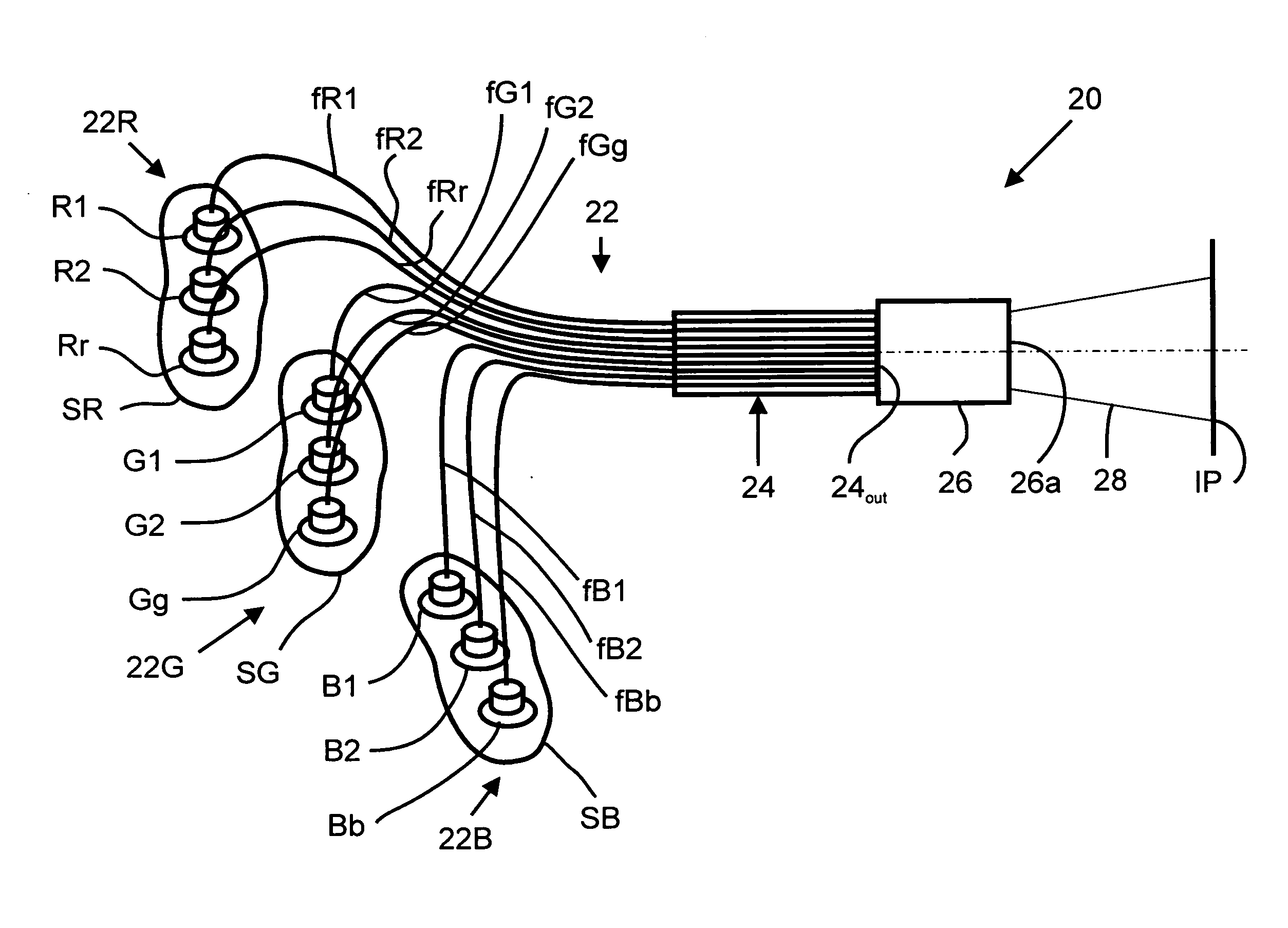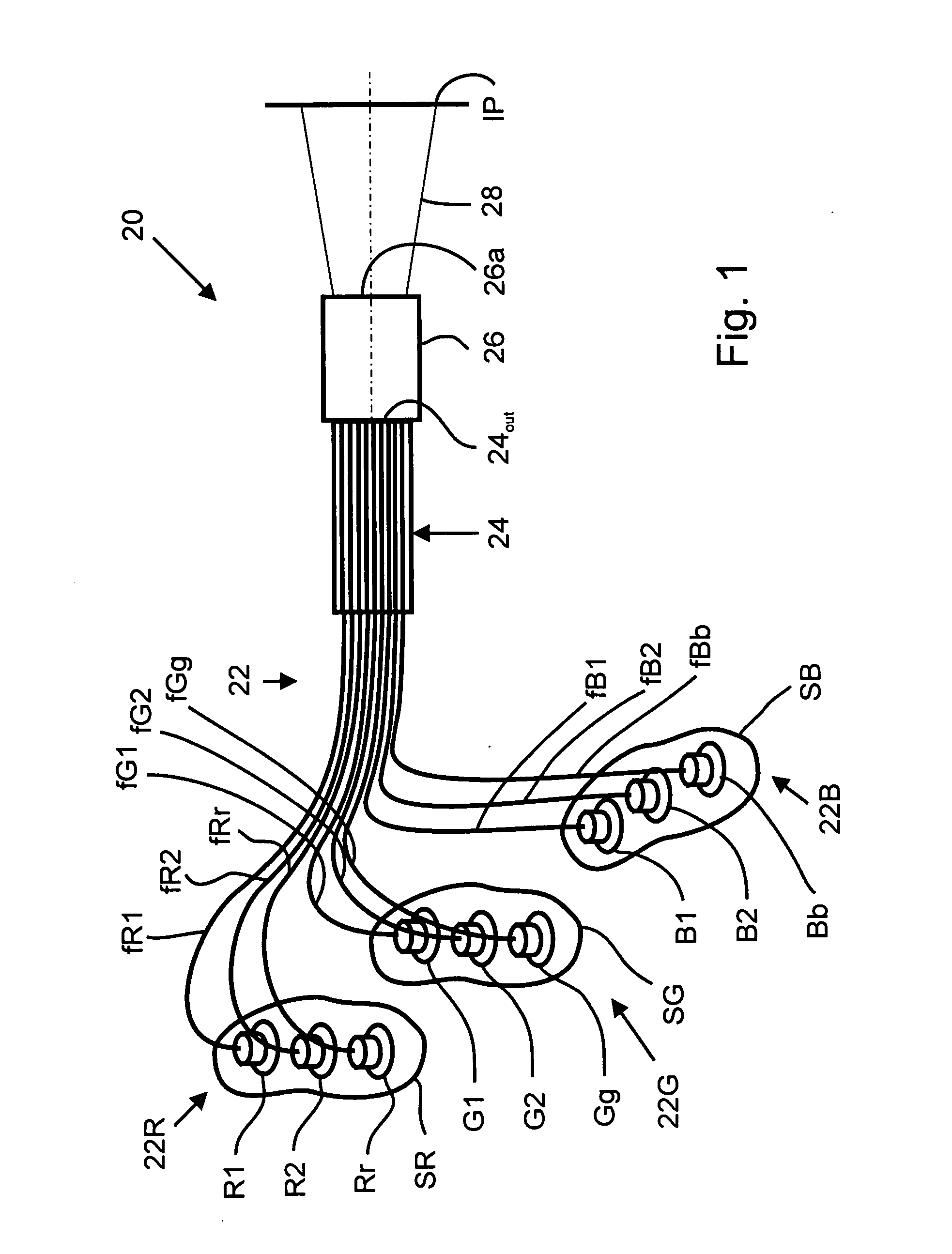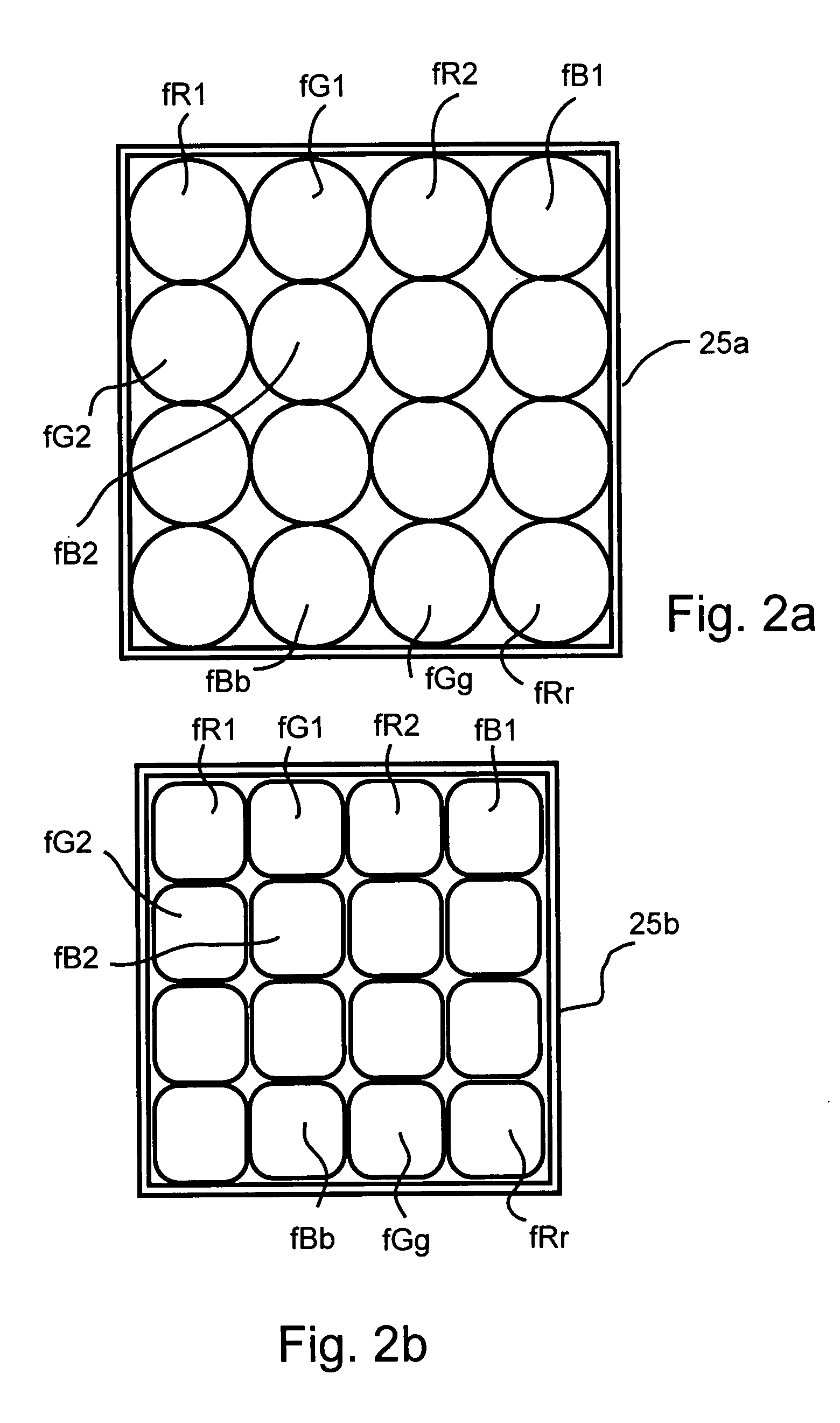Brightness with reduced optical losses
a technology of optical loss reduction and illumination, applied in the field of illumination systems, can solve the problems of insufficient illumination, limited magnification, and inability to achieve high brightness of leds, and achieve the effect of optimizing the spectrum of illumination and high brightness of illuminating ligh
- Summary
- Abstract
- Description
- Claims
- Application Information
AI Technical Summary
Benefits of technology
Problems solved by technology
Method used
Image
Examples
Embodiment Construction
[0029]For better understanding the principle of the present invention and terminology used in the description, it will be advantageous first to consider some theoretical aspects of the illumination system of the invention.
[0030]Let us assume that the illumination system of the invention consists of “n” LEDs, “n” individual light guides with “n” respective light-collecting units for projecting light from the LEDs to the light guides, which are then packed into a bundle that forms a common light guide. Let us further assume that the exit end face of the common compacted light guide is perpendicular to the direction of propagation of light and has a diameter “D”. For simplicity of the consideration, let us first consider the case when the individual light guides are single-fiber light guides. In this case we will assume that all the LEDs are identical, i.e., have identical spectra, their emitters are squares with a side “a”, and their surface brightness is “Bi”.
[0031]With reference to ...
PUM
 Login to View More
Login to View More Abstract
Description
Claims
Application Information
 Login to View More
Login to View More - R&D
- Intellectual Property
- Life Sciences
- Materials
- Tech Scout
- Unparalleled Data Quality
- Higher Quality Content
- 60% Fewer Hallucinations
Browse by: Latest US Patents, China's latest patents, Technical Efficacy Thesaurus, Application Domain, Technology Topic, Popular Technical Reports.
© 2025 PatSnap. All rights reserved.Legal|Privacy policy|Modern Slavery Act Transparency Statement|Sitemap|About US| Contact US: help@patsnap.com



